 Facebook
Facebook
 X
X
 Instagram
Instagram
 TikTok
TikTok
 Youtube
Youtube
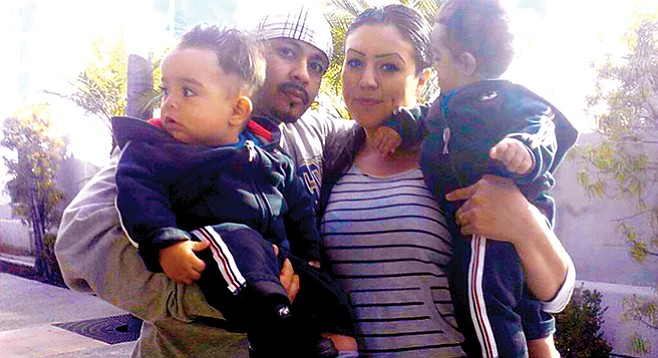

In under four-tenths of a second, six 9-millimeter bullets spit from officer Kristopher Walb’s MP5 submachine gun and tore into 27-year-old Angel Lopez.
One bullet pierced the right side of Lopez’s lower back, another drilled into Lopez’s right shoulder blade; the fatal shot bore through the base of Lopez’s skull before bursting into three pieces, shooting fragments of skull and brain tissue out from his forehead.
Approximately eight seconds earlier, officer Walb caught up to Lopez in a narrow hallway on the third story of an apartment complex near San Diego State University. Lopez had run from officers in the parking lot and retreated toward his friend’s apartment. He was wanted. He knew he was going to jail for several years. He panicked. He died because of it.
Walb later testified that Lopez turned toward him from left to right as he dug into his pants pocket for a firearm. But Lopez did not have a firearm. He carried a needle and a small amount of heroin. A forensics expert says Lopez wasn’t turning toward the officers but was kneeling, on his way to the ground, just as officers had ordered him to do.

Lopez’s wife, and mother of his twin sons, is suing the City of San Diego, its police force, and Officer Walb for the wrongful death of her husband. Her attorneys accuse the San Diego Police Department of justifying the shooting by painting Lopez as a crazy, gun-toting gang-banger who wanted nothing more than to shoot a police officer in retaliation for a fallen gang member. To make their story stick, Lopez’s attorneys say, the police department and the city attorney are ignoring the physical evidence and promoting a story wherein bullets defy gravity.
The shooting raised questions regarding the police department’s use of submachine guns and the deployment of heavily armed officers who look and act more like soldiers engaged in urban warfare rather than peace officers dispatched to protect the public.
The militarization of police forces and their use of high-powered artillery and armored vehicles became a news topic across the country in 2014 after demonstrators assembled in Ferguson, Missouri, to protest the shooting death of Michael Brown; the protesters were met by machine-gun-toting officers sitting atop armored tanks.
The Americans for Civil Liberties Union has since criticized heavily armed police platoons. In a 2014 report, the civil liberties group suggested that with heavier firepower comes a “warrior type mentality” that encourages some officers to “think of the people they are supposed to serve as enemies.”
Lopez’s widow agrees.
Judging by appearance alone, Lopez was a thug from head to toe. Tattoos covered nearly all five feet six inches of his body. His allegiance to the Latino gang San Ysidro Locos was shown in tattoo ink. “South Side San Diego” was scribed into the back of his neck. “Sidro,” short for San Ysidro Locos, spanned the width of his chest. The initials “SY” were inked into his left arm and left thigh.
Lopez’s head was shaved. He sported a thin mustache and goatee. He tucked tight, white wife-beater undershirts into his ankle-length shorts, which were so long they looked more like trousers.
On the street, people knew Lopez as “Necio,” which means foolish or stubborn in Spanish.
Lopez had served time in prison. While incarcerated he became addicted to heroin. At the time of his death, Lopez’s rap sheet had as much ink as his skin. He liked guns. During a traffic stop, officers found a gun stowed under the dashboard. In late 2012, police arrested him on suspicion of driving under the influence of drugs. His parole officer once asked him why he had pictures of a shotgun and pistol on his phone. Lopez responded that he liked guns. Yes, Lopez was a thug, through and through.
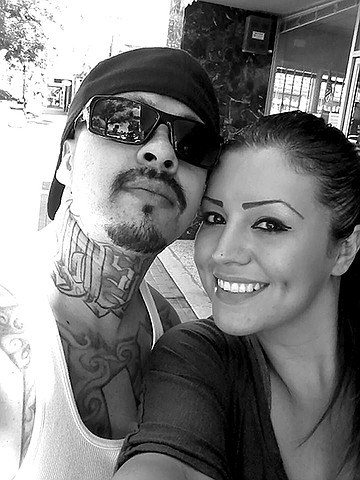
But for his widow, Lydia Lopez, tattoos, gang-banger garb, and rap sheets don’t define a person. She says there was more to Angel than just a scary façade and boulevard bravado. He was a father. The couple’s twin sons were born in early 2012. He was getting his life together for his kids. He worked at an auto dealership in Oceanside. He promised his wife he would turn himself in for the parole violations, serve the time so he could spend time with his kids.
...more than anything,” says Lydia Lopez.
Lydia sits inside her attorney’s office. In her late-20s, she wears torn jeans and a black sweater. Her long black sleeves hide cursive tattoos on her arms. Ink lettering is visible above her sweater’s neckline. She closes her eyes as she pauses to describe her dead husband and the last time she saw him. Her jet-black, long, fake eyelashes flitter wildly in the air. “I mean, he couldn’t do anything without that mischievous smile on his face. He wasn’t a threat. He had a good heart. He loved me, and he loved his kids.
“The last time I saw him was in the morning before he was killed. Oddly enough, it was my birthday that day.”
The series of events leading to Lopez’s death began with phone calls between Lopez’s parole officer and an anonymous source, later identified as Lopez’s drug dealer, Alec Pojas.
Minutes after 8 a.m. on January 17, 2013, Lopez’s state parole officer, Louis Torres, received a phone call from an unidentified man. The caller knew Lopez was wanted on a parole violation. He told Torres where Lopez was staying. He said he was left-handed and most likely carrying a .25 caliber pistol in his left pocket.
Torres jumped to action. He drove to the San Diego Police Department’s Eastern Division and waited for a follow-up call from the mystery source. The second call was placed and Torres briefed police captain Andy Mills.
Before vetting the caller, Captain Mills started setting up a command post near the Reservoir Drive location. Meanwhile, Torres and detective Steven Riddle drove to National City to meet the caller in person. Upon arriving at the designated meeting place on two occasions, Pojas was nowhere to be found. However, the calls continued. After a handful of calls, Pojas identified himself. He claimed that he had been held hostage by Lopez and Lopez’s father Alex, also wanted by police and also a known gang member, inside the Reservoir Drive apartment. Pojas claimed that he escaped after jumping from a third-story window. Besides the pistol, Pojas informed the parole officer that Lopez had an AK-47 as well as a sawed-off shotgun in the apartment.
According to Lopez’s friend, Xavier Lenyoun, who rented the apartment on Reservoir Drive, Pojas was their heroin dealer. Torres and police detectives did not know that the relationship between Pojas and Lopez had recently become rocky. Lenyoun says that Pojas and Lopez had fought about money days and weeks before the shooting.
Pojas hinted to Lenyoun and Lydia Lopez that he was planning on making calls to his parole officer.
“A lot of it actually was pretty much hinting, implying, threatening, like, cops showing up at my apartment,” Lenyoun told officers during an interview on the day of the shooting. “[Pojas was] saying things like, ‘You should get out of your apartment,’ or ‘You should tell anybody at your apartment to leave… if you don’t want anybody to get in trouble, you should tell them to leave, cause they’re coming for [Lopez].’”
Lydia Lopez heard Pojas make similar threats. “[Pojas] always was throwing out these little threats, like telling Angel to watch out for black police SUVs, because they were coming for him.”
By 10 a.m. that day, an hour and a half after Pojas’s first call to Torres, eight members of the police department’s Special Response Team and fifteen members of the Primary Response Team, the two teams that make up San Diego’s SWAT unit, gathered on Reservoir Road. Officers from the Special Response Team put on their gear. Each carried or wore a Kevlar helmet, body armor, Kevlar arm guards, two flash bangs, a pistol, extra clips, safety glasses, and MP-5 assault rifles.
Police officers devised a plan. Pojas would call Lopez and Lenyoun and ask to meet. Once at the location, police would apprehend both suspects. Pojas, however, never showed. He stopped answering his phone.
Captain Mills and his team turned to plan B. They would wait for Lopez to leave the apartment and apprehend him inside the car.
Plan B didn’t pan out either. By noon, approximately 30 officers, including a helicopter and a canine unit, were dispatched to the apartment complex. At 12:45 p.m., Captain Mills called dispatch to request that someone ping Lopez’s cell phone to make sure he was at the location. A transcript reveals Mills and others had accepted the unverified tip from informant Pojas.
“Hey, Stephanie, this is Andy Mills at our Eastern Division, we are ready to go up on a house. We got some guys armed and we know one of the cell phones is there. Can you ping that cell phone for us just to make sure it is in there or in the general vicinity?”
“…They will usually only ping a phone if it is a life or death emergency,” responded the dispatcher.
“Well, it’s a life or death emergency for him,” Mills fired back.
“So, what is his cell phone number?” asked the dispatcher.
Mills then yells to another officer, “What is dumb-ass’s cell-phone number?” Mills and others laughed.
Thirteen minutes later, at 12:58, police officers spotted Lopez and Lenyoun walking toward a rented Ford Focus.
With guns drawn, two officers approached them. The men fled. Lenyoun darted through the parking lot. Lopez ducked into a stairwell and ran up toward the third floor. Special Response Team officers Kristopher Walb, James Picket, and Jason Scott pursued him. They found him in the hallway on the third floor at Lenyoun’s front door. With automatic rifle drawn, Walb ordered Lopez to get on the ground. According to Walb, Lopez tugged at his left pocket while turning to his right. Walk tapped the trigger twice. Lopez fell.
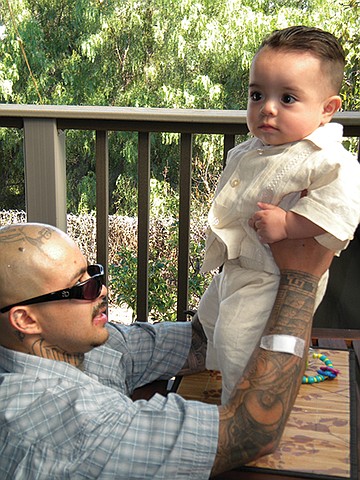
As Angel Lopez lay dead in a hallway, his wife Lydia tended to the couple’s ten-month-old twin sons. She says an eerie sensation came over her.
“I had this strange feeling, you know, like when you know in the back of your mind that something is wrong. My friend called me a few hours later and told me to turn on the news, that there was a shooting at the apartment complex where I would drop off Angel. She told me someone was under the sheet. I don’t have cable, so I went online and searched for ‘shooting, San Diego.’ I was speechless. It took a while for me to process it, but I knew it was him. I saw his shoes coming out from the end of the sheet.”
The following day, Lydia went to the coroner’s office to view the body.
“I was telling myself over and over that I needed to hold myself together, even though all I really wanted to do was fall apart, just collapse and do nothing. But I needed to see how he was shot.”
The subsequent coroner’s report describes what Lydia saw when the sheet was pulled back from her husband’s body. The skin near one entry wound on his back was burned, suggesting the bullet rubbed against his skin in an upward motion before entering his body. The shot to the head entered at the lower left side and exited high on his forehead.
“It just jumped out at me,” Lydia says. “He was shot from behind, almost like he was lying down when he was shot. That’s when I decided to find a lawyer.”
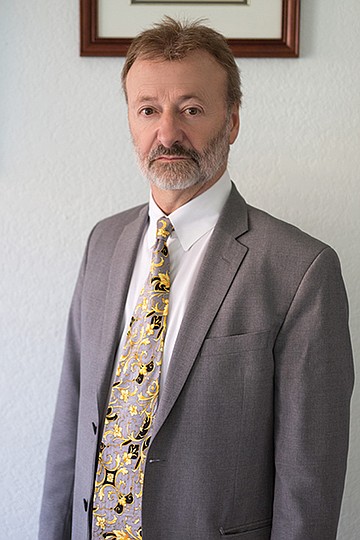
That same day, officers Walb, Picket, and Scott met at police headquarters with a psychologist and three other officers to discuss the shooting. Lopez’s attorney, Eugene Iredale, believes that’s when the three officers settled on a story that Lopez was turning to his right while digging into his pocket with his left hand.
One of the key issues in the case rests on the police department’s trust in what turned out to be an anonymous source with a vendetta against their target.
“By virtue of their training, all [San Diego Police Department] officers involved in the incident would know that Pojas was not a [confidential reliable informant] and therefore required an investigation to verify his allegations. This did not occur,” wrote expert witness Roger Clark, a 27-year veteran of the Los Angeles County Sheriff’s Department and a consultant on police procedures, who was retained by Lopez’s attorneys.
Clark examined the police report and depositions and determined that the San Diego Police Department tossed policy and proper police procedure aside and rushed to action. “In fact, the [San Diego Police Department] moved forward so quickly and irresponsibly that, according to the record, they arrived on scene at approximately 10 a.m. and Mr. Lopez was shot dead within less than 3 hours…. In my opinion, this shooting incident would not have occurred had the [police department] complied with the fundamental professional requirement not to deploy without verification of claims proffered by unproven and untested criminal informants.”
The San Diego Police Department has rules and procedures to follow with regard to unknown criminal informants, rules that weren’t followed with Pojas.
“The handling of criminal informants is potentially one of the most hazardous undertakings of an officer. The pitfalls are frequent and sometimes career ending,” reads the San Diego Police Department’s informant procedures drafted in January 2014, one year after Lopez’s death. “For that reason, the rules for informant handling are rigid and unforgiving.”
The department’s policy calls for profiling the informant as well as identifying his motivations. In addition to interviewing the informant, the detective handling him or her must submit a written memo to their supervisor outlining the informant’s history, motivations, and steps taken to verify the informant’s credibility.
Trusting anonymous sources is a problem. And police deployment of heavily armed specialized units to apprehend a suspect solely based on unverified tips is equally troubling.
“The call up and deployment of specialized units…is a very serious use of police personnel and carries significant dangers to both officer and the public,” Clark continued. “They carry and utilize high-powered and automatic weapons, unique armor and communications, specialized vehicles, and explosives. They are not unlike military units in terms of equipment and tactics.... Such units by virtue of their training, equipment and assigned duties, require reasonable and prudent rules of engagement — including an absolute rule that absent an obvious and overarching urgency, they will not deploy on unverified information. This did not occur.”
William “Dub” Lawrence is the former sheriff of Davis County, Utah. He is the face of a new documentary on the militarization of police, Peace Officer. The documentary follows Lawrence and his investigation into the 2008 shooting of his son-in-law, Brian Wood, by members of the same SWAT team he created decades earlier. As Wood sat in his truck holding a gun to his head, the SWAT unit moved in with a military-style assault. They overwhelmed Wood with flash-bang grenades and pepper balls and fired 111 rounds of ammunition, eventually killing him.
After the shooting, Lawrence looked into reasons why high-powered ammunition was needed to apprehend a distraught and suicidal man. “I’ve always maintained that it’s not the equipment, it’s how the equipment is used,” Lawrence told the Reader in an October interview. “I’m an ex-Marine. You want to have all advantages that you can in a situation. The most important advantage is the mental training, the professionalism, using the best possible approach, and that’s what’s changed since I trained law-enforcement officers. The suspect is not my enemy, he just has a warrant. Catch him when he leaves or stake him out, but take time; the police department has that time.
“Unfortunately, it’s a reality for today’s law officers, that sometimes an innocent person, or an unarmed suspect gets killed. I don’t buy that. I am adamantly opposed to that mentality, approach. I am opposed to that attitude, to the policy, procedure, and the law that enables it to continue occurring. Something must be done.”
Brian Marvel, president of the San Diego Police Officers Association, refutes the allegations that police officers have a license to kill. He says the MP-5 is not some state-of-the-art weapon, and only a special group of officers have access to them.

“MP-5’s are a 50-year-old weapon system that is in decline nationwide by law enforcement. I do believe law enforcement needs these weapon systems. It is a specific tool very narrowly used by our department. These weapon systems are usually issued to Special Response Teams and Primary Response Teams, and is comprised of a small amount of police personnel who are highly skilled and trained in the use of these weapons.
“I don’t know of any agency that is relying on semi-automatic rifle systems as a primary tool for policing their community.”
Marvel doesn’t believe there is any evidence of a correlation between use of automatic weapons and officer-involved shooting.
“I don’t think a weapon system causes an increase in fatal confrontations with peace officers. The [San Diego Police Department] and [county sheriff’s office] have full-time SWAT units, and I hardly hear about them in the news, which I believe is a testament to their skill and training in the use of these weapon systems. Their training and tactics are designed to minimize risk. The need for adequate staffing and showing up with the right tools to an incident will facilitate a peaceful resolution in almost all circumstances unless the suspect wants it differently.”
There are no witnesses to say whether Lopez was a threat to the officers. There is, however, physical evidence that contradicts officers’ accounts and shows that Lopez was potentially moving from a kneeling position to laying on his chest when he was shot.
In the hours after the shooting, Walb and his fellow officers said they were unable to see Lopez’s left side of his body, or his left hand. The officers say that Lopez was turning to his right. If true, the trajectory of the bullets would have been entirely different, forensics expert Lance Martini says.
“The physical evidence is consistent with Angel Lopez complying with the officers’ commands and either moving into a kneeling position or already in a kneeling position when shot by Officer Walb.”
On October 10, 2013, the district attorney’s office found Walb was justified in shooting Lopez. In its report, however, the district attorney relied heavily on the officers’ accounts that Lopez was digging into his pocket and turning toward the officers.
“Officer Walb… was faced with a rapidly evolving situation requiring him to make a split second decision,” read the report. “As Lopez ignored loud, repeated commands to show his hands, he continued to tug at his pants pocket while turning. Officer Walb shot Lopez based on a reasonable belief that Lopez was reaching for a .25 caliber handgun that Walb had been briefed on…. Therefore Officer Walb’s use of deadly force was justified and he bears no criminal liability for his actions.”
The report leaves the family with no other option other than to try and find justice through the courts, a long shot.
“It’s much simpler to not have any witnesses,” says Lawrence, the former Utah sheriff. “When you go to the court system, most cases against officers are dismissed because there is not enough evidence, so the whole truth does not get shown to a judge or jury. What you find is officers will cover for each other, their stories will match up, and there are no witnesses to say otherwise. My focus is to raise the level of discussion to a point where lawmakers, judges, attorneys, the public at large, can look at these issues and improve on what we are doing. We don’t need to have officers killed unnecessarily, nor do we need to have civilians killed unnecessarily.
“The inequity here is that a civilian goes to jail and is presumed guilty, whereas an officer is given a leave with pay.”
For Lydia Lopez, the court case has taken its toll and will likely last for years to come. In August 2015, a district court judge ruled that Walb did not qualify for immunity, which means a jury will hear the case. The city has since filed an appeal.
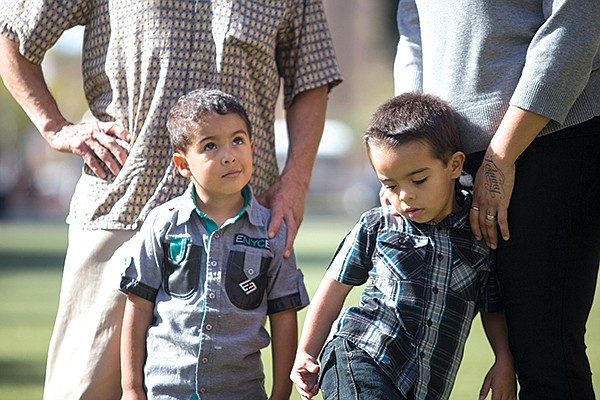
Lopez must now raise her kids on her own. They ask about their dad from time to time. Lopez tries her best to remember the jokes and the good times the couple shared.
“I’ll eventually tell them about it. For now, every night after they finish saying their prayers they end the prayer by saying, ‘I love you, Daddy.’”



In under four-tenths of a second, six 9-millimeter bullets spit from officer Kristopher Walb’s MP5 submachine gun and tore into 27-year-old Angel Lopez.
One bullet pierced the right side of Lopez’s lower back, another drilled into Lopez’s right shoulder blade; the fatal shot bore through the base of Lopez’s skull before bursting into three pieces, shooting fragments of skull and brain tissue out from his forehead.
Approximately eight seconds earlier, officer Walb caught up to Lopez in a narrow hallway on the third story of an apartment complex near San Diego State University. Lopez had run from officers in the parking lot and retreated toward his friend’s apartment. He was wanted. He knew he was going to jail for several years. He panicked. He died because of it.
Walb later testified that Lopez turned toward him from left to right as he dug into his pants pocket for a firearm. But Lopez did not have a firearm. He carried a needle and a small amount of heroin. A forensics expert says Lopez wasn’t turning toward the officers but was kneeling, on his way to the ground, just as officers had ordered him to do.

Lopez’s wife, and mother of his twin sons, is suing the City of San Diego, its police force, and Officer Walb for the wrongful death of her husband. Her attorneys accuse the San Diego Police Department of justifying the shooting by painting Lopez as a crazy, gun-toting gang-banger who wanted nothing more than to shoot a police officer in retaliation for a fallen gang member. To make their story stick, Lopez’s attorneys say, the police department and the city attorney are ignoring the physical evidence and promoting a story wherein bullets defy gravity.
The shooting raised questions regarding the police department’s use of submachine guns and the deployment of heavily armed officers who look and act more like soldiers engaged in urban warfare rather than peace officers dispatched to protect the public.
The militarization of police forces and their use of high-powered artillery and armored vehicles became a news topic across the country in 2014 after demonstrators assembled in Ferguson, Missouri, to protest the shooting death of Michael Brown; the protesters were met by machine-gun-toting officers sitting atop armored tanks.
The Americans for Civil Liberties Union has since criticized heavily armed police platoons. In a 2014 report, the civil liberties group suggested that with heavier firepower comes a “warrior type mentality” that encourages some officers to “think of the people they are supposed to serve as enemies.”
Lopez’s widow agrees.
Judging by appearance alone, Lopez was a thug from head to toe. Tattoos covered nearly all five feet six inches of his body. His allegiance to the Latino gang San Ysidro Locos was shown in tattoo ink. “South Side San Diego” was scribed into the back of his neck. “Sidro,” short for San Ysidro Locos, spanned the width of his chest. The initials “SY” were inked into his left arm and left thigh.
Lopez’s head was shaved. He sported a thin mustache and goatee. He tucked tight, white wife-beater undershirts into his ankle-length shorts, which were so long they looked more like trousers.
On the street, people knew Lopez as “Necio,” which means foolish or stubborn in Spanish.
Lopez had served time in prison. While incarcerated he became addicted to heroin. At the time of his death, Lopez’s rap sheet had as much ink as his skin. He liked guns. During a traffic stop, officers found a gun stowed under the dashboard. In late 2012, police arrested him on suspicion of driving under the influence of drugs. His parole officer once asked him why he had pictures of a shotgun and pistol on his phone. Lopez responded that he liked guns. Yes, Lopez was a thug, through and through.

But for his widow, Lydia Lopez, tattoos, gang-banger garb, and rap sheets don’t define a person. She says there was more to Angel than just a scary façade and boulevard bravado. He was a father. The couple’s twin sons were born in early 2012. He was getting his life together for his kids. He worked at an auto dealership in Oceanside. He promised his wife he would turn himself in for the parole violations, serve the time so he could spend time with his kids.
...more than anything,” says Lydia Lopez.
Lydia sits inside her attorney’s office. In her late-20s, she wears torn jeans and a black sweater. Her long black sleeves hide cursive tattoos on her arms. Ink lettering is visible above her sweater’s neckline. She closes her eyes as she pauses to describe her dead husband and the last time she saw him. Her jet-black, long, fake eyelashes flitter wildly in the air. “I mean, he couldn’t do anything without that mischievous smile on his face. He wasn’t a threat. He had a good heart. He loved me, and he loved his kids.
“The last time I saw him was in the morning before he was killed. Oddly enough, it was my birthday that day.”
The series of events leading to Lopez’s death began with phone calls between Lopez’s parole officer and an anonymous source, later identified as Lopez’s drug dealer, Alec Pojas.
Minutes after 8 a.m. on January 17, 2013, Lopez’s state parole officer, Louis Torres, received a phone call from an unidentified man. The caller knew Lopez was wanted on a parole violation. He told Torres where Lopez was staying. He said he was left-handed and most likely carrying a .25 caliber pistol in his left pocket.
Torres jumped to action. He drove to the San Diego Police Department’s Eastern Division and waited for a follow-up call from the mystery source. The second call was placed and Torres briefed police captain Andy Mills.
Before vetting the caller, Captain Mills started setting up a command post near the Reservoir Drive location. Meanwhile, Torres and detective Steven Riddle drove to National City to meet the caller in person. Upon arriving at the designated meeting place on two occasions, Pojas was nowhere to be found. However, the calls continued. After a handful of calls, Pojas identified himself. He claimed that he had been held hostage by Lopez and Lopez’s father Alex, also wanted by police and also a known gang member, inside the Reservoir Drive apartment. Pojas claimed that he escaped after jumping from a third-story window. Besides the pistol, Pojas informed the parole officer that Lopez had an AK-47 as well as a sawed-off shotgun in the apartment.
According to Lopez’s friend, Xavier Lenyoun, who rented the apartment on Reservoir Drive, Pojas was their heroin dealer. Torres and police detectives did not know that the relationship between Pojas and Lopez had recently become rocky. Lenyoun says that Pojas and Lopez had fought about money days and weeks before the shooting.
Pojas hinted to Lenyoun and Lydia Lopez that he was planning on making calls to his parole officer.
“A lot of it actually was pretty much hinting, implying, threatening, like, cops showing up at my apartment,” Lenyoun told officers during an interview on the day of the shooting. “[Pojas was] saying things like, ‘You should get out of your apartment,’ or ‘You should tell anybody at your apartment to leave… if you don’t want anybody to get in trouble, you should tell them to leave, cause they’re coming for [Lopez].’”
Lydia Lopez heard Pojas make similar threats. “[Pojas] always was throwing out these little threats, like telling Angel to watch out for black police SUVs, because they were coming for him.”
By 10 a.m. that day, an hour and a half after Pojas’s first call to Torres, eight members of the police department’s Special Response Team and fifteen members of the Primary Response Team, the two teams that make up San Diego’s SWAT unit, gathered on Reservoir Road. Officers from the Special Response Team put on their gear. Each carried or wore a Kevlar helmet, body armor, Kevlar arm guards, two flash bangs, a pistol, extra clips, safety glasses, and MP-5 assault rifles.
Police officers devised a plan. Pojas would call Lopez and Lenyoun and ask to meet. Once at the location, police would apprehend both suspects. Pojas, however, never showed. He stopped answering his phone.
Captain Mills and his team turned to plan B. They would wait for Lopez to leave the apartment and apprehend him inside the car.
Plan B didn’t pan out either. By noon, approximately 30 officers, including a helicopter and a canine unit, were dispatched to the apartment complex. At 12:45 p.m., Captain Mills called dispatch to request that someone ping Lopez’s cell phone to make sure he was at the location. A transcript reveals Mills and others had accepted the unverified tip from informant Pojas.
“Hey, Stephanie, this is Andy Mills at our Eastern Division, we are ready to go up on a house. We got some guys armed and we know one of the cell phones is there. Can you ping that cell phone for us just to make sure it is in there or in the general vicinity?”
“…They will usually only ping a phone if it is a life or death emergency,” responded the dispatcher.
“Well, it’s a life or death emergency for him,” Mills fired back.
“So, what is his cell phone number?” asked the dispatcher.
Mills then yells to another officer, “What is dumb-ass’s cell-phone number?” Mills and others laughed.
Thirteen minutes later, at 12:58, police officers spotted Lopez and Lenyoun walking toward a rented Ford Focus.
With guns drawn, two officers approached them. The men fled. Lenyoun darted through the parking lot. Lopez ducked into a stairwell and ran up toward the third floor. Special Response Team officers Kristopher Walb, James Picket, and Jason Scott pursued him. They found him in the hallway on the third floor at Lenyoun’s front door. With automatic rifle drawn, Walb ordered Lopez to get on the ground. According to Walb, Lopez tugged at his left pocket while turning to his right. Walk tapped the trigger twice. Lopez fell.

As Angel Lopez lay dead in a hallway, his wife Lydia tended to the couple’s ten-month-old twin sons. She says an eerie sensation came over her.
“I had this strange feeling, you know, like when you know in the back of your mind that something is wrong. My friend called me a few hours later and told me to turn on the news, that there was a shooting at the apartment complex where I would drop off Angel. She told me someone was under the sheet. I don’t have cable, so I went online and searched for ‘shooting, San Diego.’ I was speechless. It took a while for me to process it, but I knew it was him. I saw his shoes coming out from the end of the sheet.”
The following day, Lydia went to the coroner’s office to view the body.
“I was telling myself over and over that I needed to hold myself together, even though all I really wanted to do was fall apart, just collapse and do nothing. But I needed to see how he was shot.”
The subsequent coroner’s report describes what Lydia saw when the sheet was pulled back from her husband’s body. The skin near one entry wound on his back was burned, suggesting the bullet rubbed against his skin in an upward motion before entering his body. The shot to the head entered at the lower left side and exited high on his forehead.
“It just jumped out at me,” Lydia says. “He was shot from behind, almost like he was lying down when he was shot. That’s when I decided to find a lawyer.”

That same day, officers Walb, Picket, and Scott met at police headquarters with a psychologist and three other officers to discuss the shooting. Lopez’s attorney, Eugene Iredale, believes that’s when the three officers settled on a story that Lopez was turning to his right while digging into his pocket with his left hand.
One of the key issues in the case rests on the police department’s trust in what turned out to be an anonymous source with a vendetta against their target.
“By virtue of their training, all [San Diego Police Department] officers involved in the incident would know that Pojas was not a [confidential reliable informant] and therefore required an investigation to verify his allegations. This did not occur,” wrote expert witness Roger Clark, a 27-year veteran of the Los Angeles County Sheriff’s Department and a consultant on police procedures, who was retained by Lopez’s attorneys.
Clark examined the police report and depositions and determined that the San Diego Police Department tossed policy and proper police procedure aside and rushed to action. “In fact, the [San Diego Police Department] moved forward so quickly and irresponsibly that, according to the record, they arrived on scene at approximately 10 a.m. and Mr. Lopez was shot dead within less than 3 hours…. In my opinion, this shooting incident would not have occurred had the [police department] complied with the fundamental professional requirement not to deploy without verification of claims proffered by unproven and untested criminal informants.”
The San Diego Police Department has rules and procedures to follow with regard to unknown criminal informants, rules that weren’t followed with Pojas.
“The handling of criminal informants is potentially one of the most hazardous undertakings of an officer. The pitfalls are frequent and sometimes career ending,” reads the San Diego Police Department’s informant procedures drafted in January 2014, one year after Lopez’s death. “For that reason, the rules for informant handling are rigid and unforgiving.”
The department’s policy calls for profiling the informant as well as identifying his motivations. In addition to interviewing the informant, the detective handling him or her must submit a written memo to their supervisor outlining the informant’s history, motivations, and steps taken to verify the informant’s credibility.
Trusting anonymous sources is a problem. And police deployment of heavily armed specialized units to apprehend a suspect solely based on unverified tips is equally troubling.
“The call up and deployment of specialized units…is a very serious use of police personnel and carries significant dangers to both officer and the public,” Clark continued. “They carry and utilize high-powered and automatic weapons, unique armor and communications, specialized vehicles, and explosives. They are not unlike military units in terms of equipment and tactics.... Such units by virtue of their training, equipment and assigned duties, require reasonable and prudent rules of engagement — including an absolute rule that absent an obvious and overarching urgency, they will not deploy on unverified information. This did not occur.”
William “Dub” Lawrence is the former sheriff of Davis County, Utah. He is the face of a new documentary on the militarization of police, Peace Officer. The documentary follows Lawrence and his investigation into the 2008 shooting of his son-in-law, Brian Wood, by members of the same SWAT team he created decades earlier. As Wood sat in his truck holding a gun to his head, the SWAT unit moved in with a military-style assault. They overwhelmed Wood with flash-bang grenades and pepper balls and fired 111 rounds of ammunition, eventually killing him.
After the shooting, Lawrence looked into reasons why high-powered ammunition was needed to apprehend a distraught and suicidal man. “I’ve always maintained that it’s not the equipment, it’s how the equipment is used,” Lawrence told the Reader in an October interview. “I’m an ex-Marine. You want to have all advantages that you can in a situation. The most important advantage is the mental training, the professionalism, using the best possible approach, and that’s what’s changed since I trained law-enforcement officers. The suspect is not my enemy, he just has a warrant. Catch him when he leaves or stake him out, but take time; the police department has that time.
“Unfortunately, it’s a reality for today’s law officers, that sometimes an innocent person, or an unarmed suspect gets killed. I don’t buy that. I am adamantly opposed to that mentality, approach. I am opposed to that attitude, to the policy, procedure, and the law that enables it to continue occurring. Something must be done.”
Brian Marvel, president of the San Diego Police Officers Association, refutes the allegations that police officers have a license to kill. He says the MP-5 is not some state-of-the-art weapon, and only a special group of officers have access to them.

“MP-5’s are a 50-year-old weapon system that is in decline nationwide by law enforcement. I do believe law enforcement needs these weapon systems. It is a specific tool very narrowly used by our department. These weapon systems are usually issued to Special Response Teams and Primary Response Teams, and is comprised of a small amount of police personnel who are highly skilled and trained in the use of these weapons.
“I don’t know of any agency that is relying on semi-automatic rifle systems as a primary tool for policing their community.”
Marvel doesn’t believe there is any evidence of a correlation between use of automatic weapons and officer-involved shooting.
“I don’t think a weapon system causes an increase in fatal confrontations with peace officers. The [San Diego Police Department] and [county sheriff’s office] have full-time SWAT units, and I hardly hear about them in the news, which I believe is a testament to their skill and training in the use of these weapon systems. Their training and tactics are designed to minimize risk. The need for adequate staffing and showing up with the right tools to an incident will facilitate a peaceful resolution in almost all circumstances unless the suspect wants it differently.”
There are no witnesses to say whether Lopez was a threat to the officers. There is, however, physical evidence that contradicts officers’ accounts and shows that Lopez was potentially moving from a kneeling position to laying on his chest when he was shot.
In the hours after the shooting, Walb and his fellow officers said they were unable to see Lopez’s left side of his body, or his left hand. The officers say that Lopez was turning to his right. If true, the trajectory of the bullets would have been entirely different, forensics expert Lance Martini says.
“The physical evidence is consistent with Angel Lopez complying with the officers’ commands and either moving into a kneeling position or already in a kneeling position when shot by Officer Walb.”
On October 10, 2013, the district attorney’s office found Walb was justified in shooting Lopez. In its report, however, the district attorney relied heavily on the officers’ accounts that Lopez was digging into his pocket and turning toward the officers.
“Officer Walb… was faced with a rapidly evolving situation requiring him to make a split second decision,” read the report. “As Lopez ignored loud, repeated commands to show his hands, he continued to tug at his pants pocket while turning. Officer Walb shot Lopez based on a reasonable belief that Lopez was reaching for a .25 caliber handgun that Walb had been briefed on…. Therefore Officer Walb’s use of deadly force was justified and he bears no criminal liability for his actions.”
The report leaves the family with no other option other than to try and find justice through the courts, a long shot.
“It’s much simpler to not have any witnesses,” says Lawrence, the former Utah sheriff. “When you go to the court system, most cases against officers are dismissed because there is not enough evidence, so the whole truth does not get shown to a judge or jury. What you find is officers will cover for each other, their stories will match up, and there are no witnesses to say otherwise. My focus is to raise the level of discussion to a point where lawmakers, judges, attorneys, the public at large, can look at these issues and improve on what we are doing. We don’t need to have officers killed unnecessarily, nor do we need to have civilians killed unnecessarily.
“The inequity here is that a civilian goes to jail and is presumed guilty, whereas an officer is given a leave with pay.”
For Lydia Lopez, the court case has taken its toll and will likely last for years to come. In August 2015, a district court judge ruled that Walb did not qualify for immunity, which means a jury will hear the case. The city has since filed an appeal.

Lopez must now raise her kids on her own. They ask about their dad from time to time. Lopez tries her best to remember the jokes and the good times the couple shared.
“I’ll eventually tell them about it. For now, every night after they finish saying their prayers they end the prayer by saying, ‘I love you, Daddy.’”
Comments